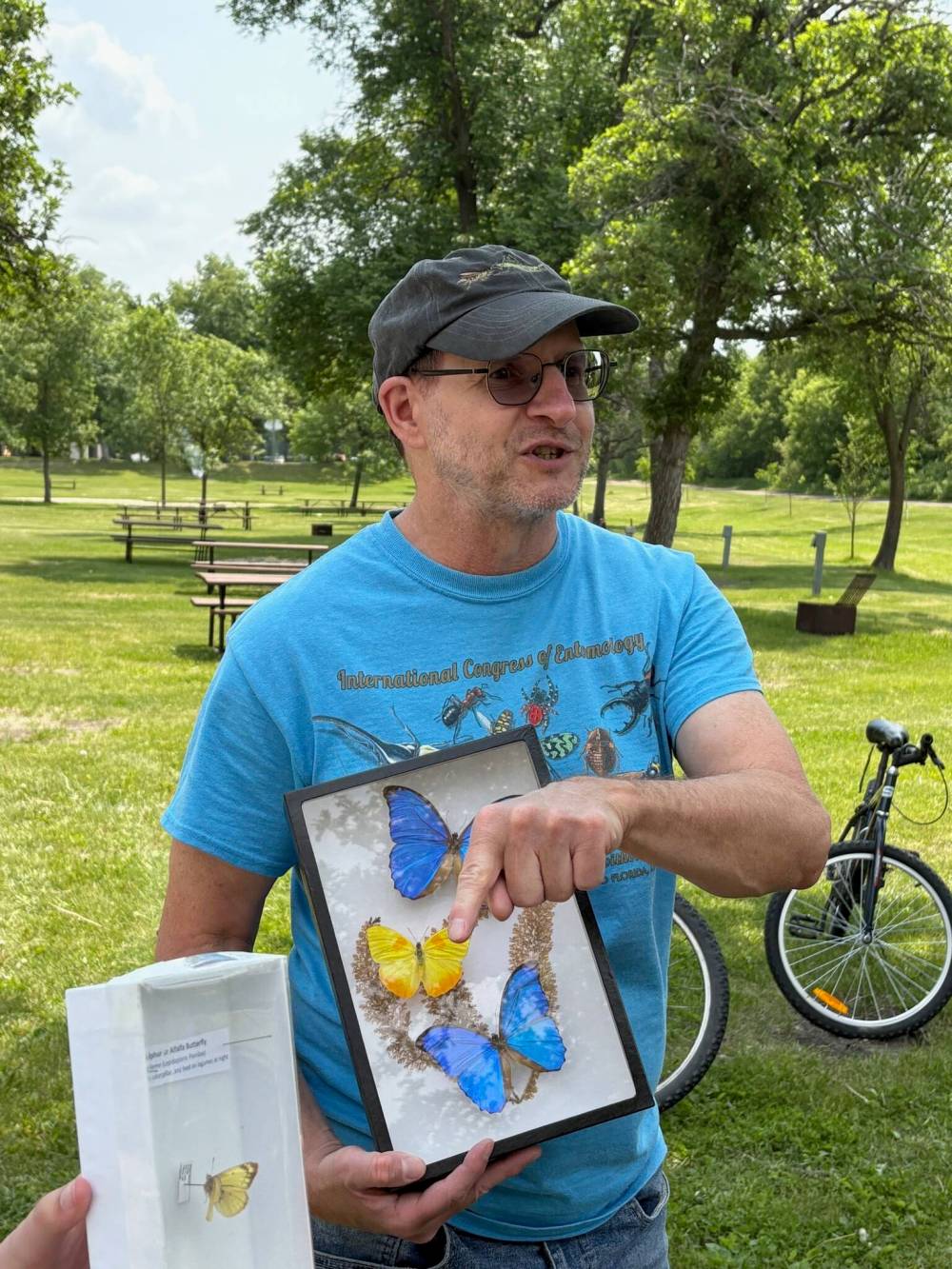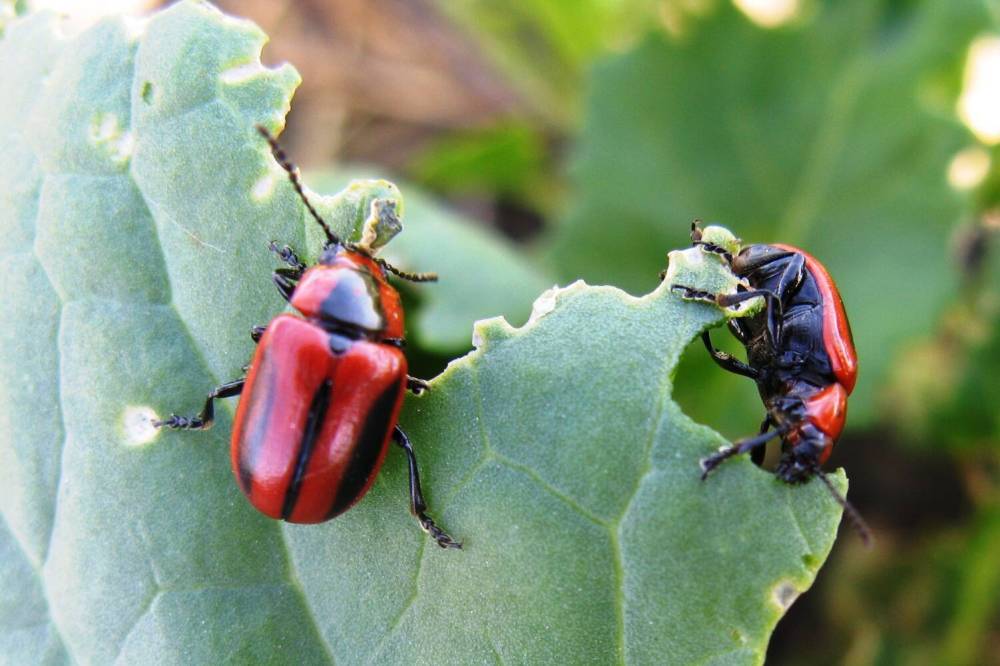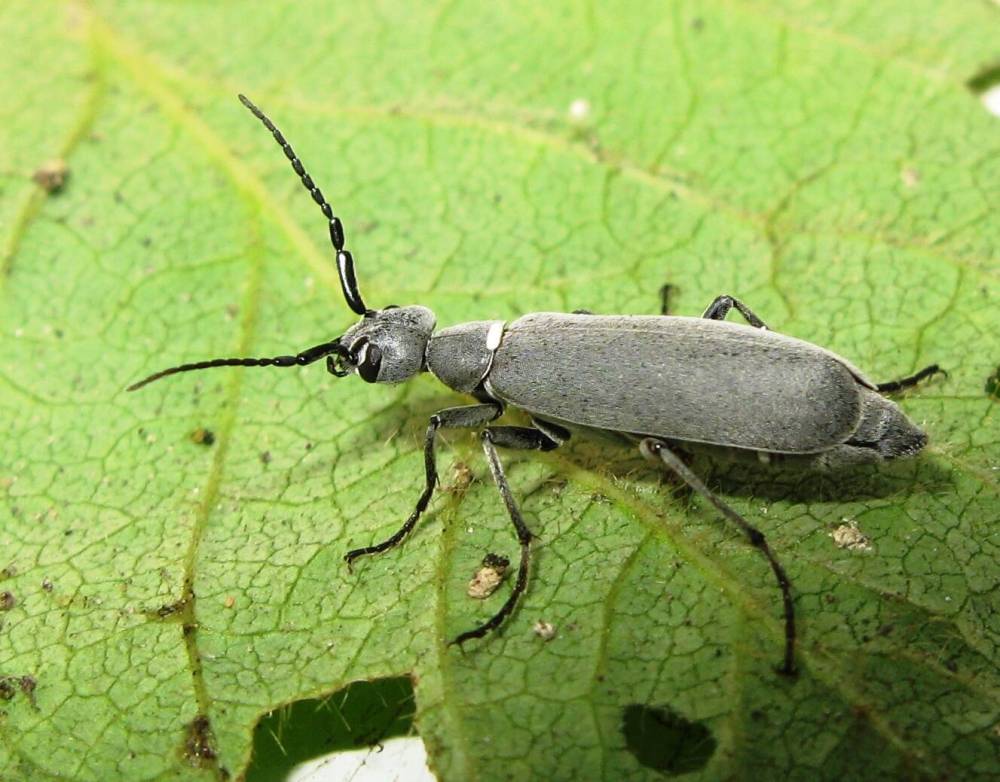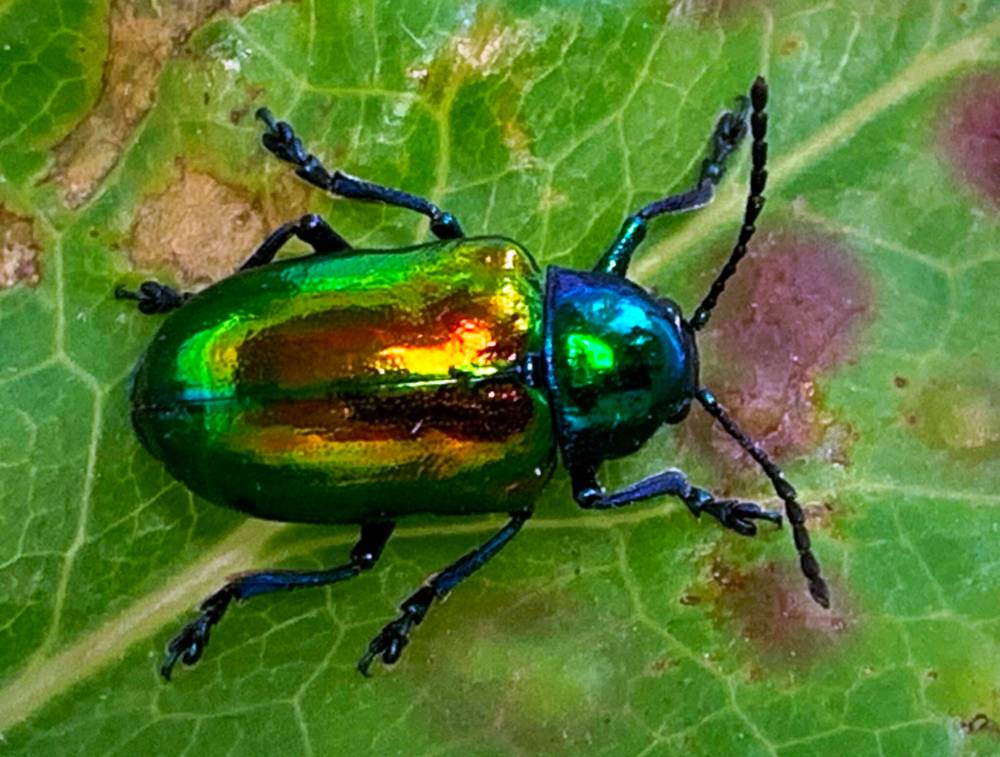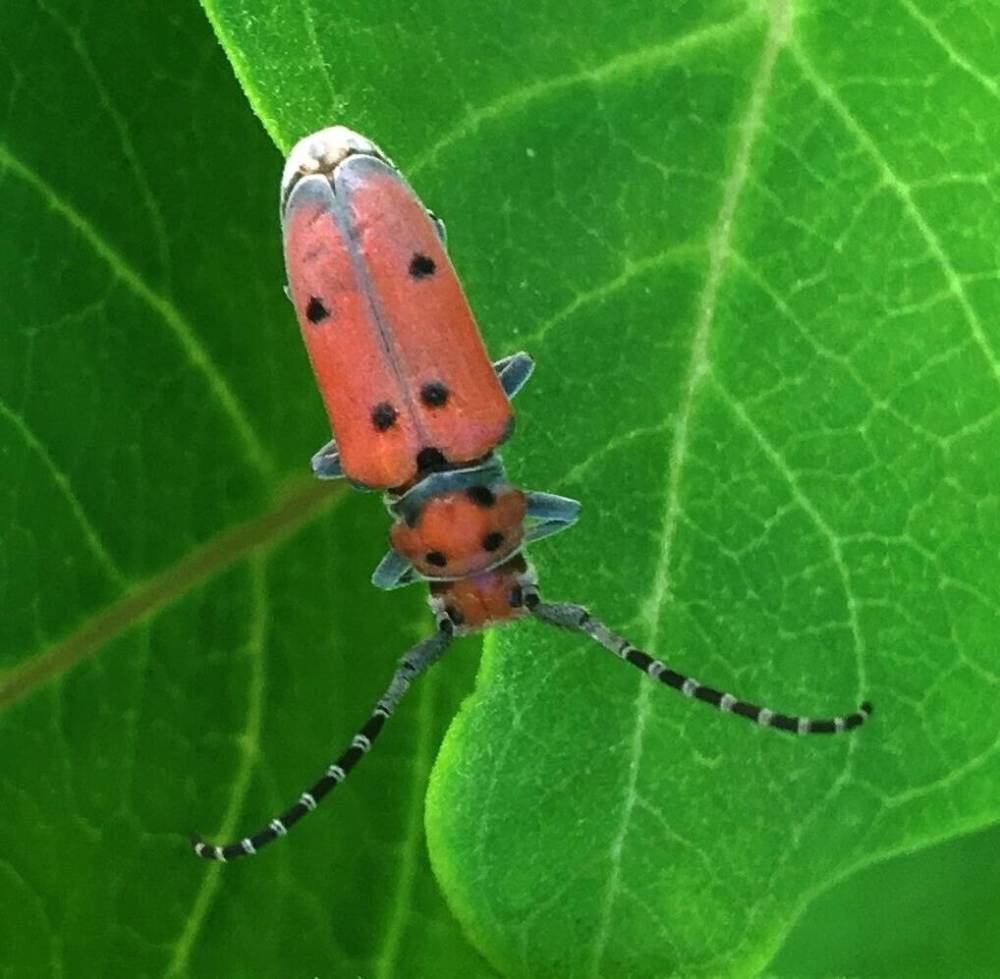Beetle-mania Entomologist shares benefits and beauty of bugs on planet
Read this article for free:
or
Already have an account? Log in here »
To continue reading, please subscribe:
Monthly Digital Subscription
$1 per week for 24 weeks*
- Enjoy unlimited reading on winnipegfreepress.com
- Read the E-Edition, our digital replica newspaper
- Access News Break, our award-winning app
- Play interactive puzzles
*Billed as $4.00 plus GST every four weeks. After 24 weeks, price increases to the regular rate of $19.00 plus GST every four weeks. Offer available to new and qualified returning subscribers only. Cancel any time.
Monthly Digital Subscription
$4.75/week*
- Enjoy unlimited reading on winnipegfreepress.com
- Read the E-Edition, our digital replica newspaper
- Access News Break, our award-winning app
- Play interactive puzzles
*Billed as $19 plus GST every four weeks. Cancel any time.
To continue reading, please subscribe:
Add Winnipeg Free Press access to your Brandon Sun subscription for only
$1 for the first 4 weeks*
*$1 will be added to your next bill. After your 4 weeks access is complete your rate will increase by $0.00 a X percent off the regular rate.
Read unlimited articles for free today:
or
Already have an account? Log in here »
King’s Park in Carman basks in the golden glow of early afternoon sunlight. The towering oak trees cast shifting shadows as birdsong, the chirping of crickets and the fluttering of countless insect wings fill the air.
A male Baltimore oriole, its fiery orange plumage a stark contrast against the deep green canopy, flits between branches. The scent of sage mingles with the sweetness of wildflowers.
John Gavloski shares his collection of insect specimens with students.
At the centre of this symphony of life in the park, 85 kilometres southwest of Winnipeg, stands John Gavloski, entomologist with Manitoba Agriculture. He’s beside a wooden picnic table adorned with meticulously arranged insect specimens.
His summer student, Abi Benson, moves alongside, ensuring the assortment of pinned insects, delicately preserved butterflies and moths and colony of live insects are displayed for the curious eyes of about 40 home-schooled children, aged four to 13, and their mothers.
“This,” Gavloski gestures to the collection, “is just a glimpse into the hidden world that surrounds us every day.”
Gavloski’s journey into entomology began long before his current work.
Red turnip beetles, found by John Gavloski near Swan River
Originally from Brantford, Ont., he studied at the University of Guelph, later earning his PhD in entomology at the University of Manitoba. A postdoctoral research position at the University of Alberta further deepened his expertise, leading him into a career dedicated to insects, ecosystems and their interactions with agriculture.
His work now extends beyond research — he conducts monitoring programs for several insects and advises farmers and agronomists, providing crucial insights on pest management and the many beneficial roles of insects and biodiversity.
“In addition to my work serving the agricultural community, public education about insects, especially their beneficial roles and diversity, is also something I like to do. I like to share my passion about insects with the public,” Gavloski says.
“Beetles are the most diverse group on the planet. There are just over 10,000 bird species worldwide, but we estimate between 300,000 and 400,000 beetle species, and we’re still finding more.”– John Gavloski, entomologist with Manitoba Agriculture
The children lean in, their eyes bright with curiosity. Some eagerly identify species by their common names — lady beetles, walkingsticks, beetles and monarch butterflies. Their mothers exchange knowing glances; these kids are absorbing every detail.
Gavloski explains how insects play critical roles in ecosystems.
“Most people don’t realize that we have dung beetles in Manitoba. Without them, pastures would be a lot messier. Carrion beetles help break down dead animals. Even the smallest creatures, like springtails, work tirelessly to decompose plant material, enriching the soil,” he says.
He speaks of Manitoba’s astonishing beetle diversity — 2,679 species had been documented by 2013, with more discoveries every year.
“Beetles are the most diverse group on the planet. There are just over 10,000 bird species worldwide, but we estimate between 300,000 and 400,000 beetle species, and we’re still finding more. They occupy almost every habitat imaginable — aquatic, soil, plants, dung, even living on dead animals,” Gavloski says.
Blister beetle, located on soybeans in Elm Creek.
The children marvel at the many types and resilience of beetles.
“If you ever try to squish a weevil, you’ll find it’s nearly impossible,” Gavloski chuckles. “Their tough exoskeleton allows them to thrive in harsh environments.”
Benson, when back in the entomology lab, takes the initiative to conduct her own experiments.
“I’ve been testing pea leaf weevils. Each weevil gets 24 hours with a leaf in a petri dish and I check how many notches they’ve made,” she explains.
The entomology lab, with its dissecting microscope and tables filled with containers awaiting pinning, serves as the nerve centre for their research.
Benson, who is studying biology at U of M, meticulously sorts insects from field samples, separating species for further study or to pin as display specimens.
“Insects tell stories. Some protect crops, some threaten them, but all play a role. The diversity of insects in just a small area can be great.”– John Gavloski
Gavloski pauses near a display featuring two-striped grasshoppers (a species particularly abundant on the Prairies) affected by summit disease — a strange affliction by a fungal pathogen that alters their behaviour, causing them to climb to the tops of plants, cling tightly and die, spreading fungal spores to a wide area.
Nature is filled with wonders — some beautiful, some eerie — but all interconnected, he says.
His office, crammed with books, filing cabinets and resource materials, bears testament to a lifetime dedicated to understanding the world’s smallest creatures. A checklist of beetles in Canada and Alaska is tucked into a stack of reference papers — 376 species of ground beetles (an important group of predators) in Manitoba, 390 species of rove beetles, adding up to an ever-growing grand total.
A dogbane beetle, collected near Arnaud
As the presentation in the park continues, Gavloski distributes sweep nets and pop-up cages.
“Now let’s meet these creatures in the wild,” he says.
Excited children fan out across the park, their nets slicing through the vegetation and air in wide arcs.
Leafhoppers leap, hover flies dart and beetles scurry through the grass. Gavloski wanders among them, offering insight, identifying insects and encouraging curiosity. A young boy grins triumphantly, revealing a captured dragonfly.
Raelyn, who has brought four of her children, smiles as she watches them chase bugs.
“It’s a great opportunity to learn in a hands-on way. The kids love collecting bugs at home, so this is right up their alley,” she says.
Near the picnic table, Robert Wrigley, a retired biologist from Winnipeg, admires John’s collection.
“It’s impressive. Many species I’ve never encountered before,” says the author of the illustrated book Tiger Beetles of Manitoba: Ecology, Life History and Microsculpture.
The name says it all: Red Milkweed Beetle loves milkweed.
As the afternoon slips toward golden hour, Gavloski gathers the group once more, their cages full.
From the vegetation along the trail, they have collected a large number of insects; leafhoppers, fireflies (which are actually beetles), stink bugs, treehoppers (which can be good thorn mimics), spittlebugs, damselflies, hover flies, lady beetles, bees, different types of caterpillars and others.
“Insects tell stories. Some protect crops, some threaten them, but all play a role. The diversity of insects in just a small area can be great. The more we understand what is around us, the more we understand them, the more we can work alongside nature instead of against it,” Gavloski says.
The Baltimore oriole soars once more, casting a flickering shadow over the picnic table. As the children pack up their sweep nets, their excitement lingers.
Some of them, Gavloski knows, will never look at the world the same way again.
arts@freepress.mb.ca
Survival of the fittest
Largest group of animals: Insects make up about 80 per cent of all known animal species on Earth. There are more than a million described species, with many more yet to be discovered.
Super strong: Pound for pound, some insects are among the strongest creatures. The leafcutter ant can carry up to 50 times its own body weight.
Masters of disguise: Many insects use camouflage to blend into their environment. The walkingstick insect looks just like a twig, making it nearly invisible to predators.
Built-in glow: Some insects, such as fireflies, produce their own light through a process called bioluminescence. Their glow helps attract mates or ward off predators.
Ancient survivors: Insects have been around for more than 400 million years, surviving mass extinctions that wiped out dinosaurs and other species.
Vital pollinators: Bees, butterflies and other insects are essential for pollination, which helps plants produce fruits and seeds. About 75 per cent of flowering plants rely on insect pollination.
Fast flyers: Some insects are incredibly quick. The dragonfly can reach speeds of up to 55 km/h, making it one of the fastest flying insects.
Strange diets: Some insects eat things you would never expect. The bombardier beetle sprays boiling hot, toxic chemicals to deter attackers, while antlions dig pits to trap their prey.
Record-breaking heights: Fleas are among the best jumpers in the animal kingdom. They can leap over 150 times their body length — that’s like a human jumping the length of a football field.
Global citizens: Insects can be found in nearly every habitat on Earth, from the scorching deserts to freezing tundras. Some, like water striders, can even walk on water thanks to surface tension.
Helper insects
There are many species of beetles in Manitoba that prey on other insects.
Some of the most important of these in regulating populations of insects that feed on crops are lady beetles, ground beetles and rove beetles. In addition, larvae of some species of blister beetles feed on grasshopper eggs.
Manitoba Agriculture entomologist John Gavloski notes that one of his goals is to increase awareness of the role of beneficial insects among farmers and agronomists.
“At winter meetings or summer crop diagnostic schools where farmers and agronomists attend, I’m always working these into the presentations and displays,” he says.
“We’re increasing the level of awareness. I’ve put together some resources, field guides about the role of beneficial insects, mainly geared to farmers and agronomists. I think more and more farmers and agronomists are aware of these beneficials.”

